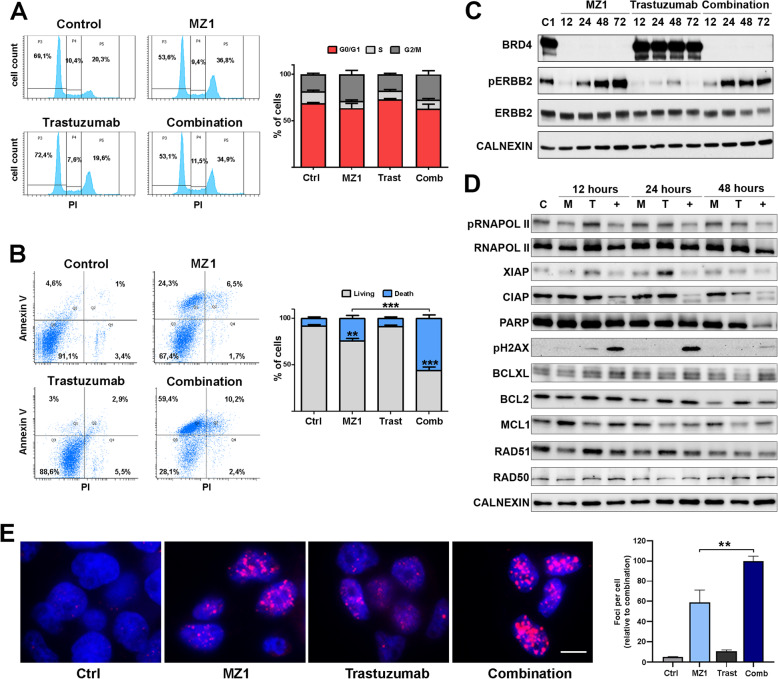Fig. 2.
Mechanism of action of MZ1-Trastuzumab combination. a BT474 cells were treated with MZ1 (100 nM), trastuzumab (10 nM) or the MZ1-trastuzumab combination for 24 h and cell cycle was evaluated by flow cytometry. Left, flow cytometry plots (Annexin V (AV, y axis) and propidium iodure (PI, x axis). Right, bar graphs show the percentage of cells in G0/G1, S, or G2/M cell cycle phases. b BT474 cells were treated with MZ1 (100 nM), trastuzumab (10 nM) or the MZ1-trastuzumab combination for 72 h and cell death was evaluated by flow cytometry with Annexin V (AV) and propidium iodure (PI) staining. Left, flow cytometry plots (Q3, living (AV -, PI -); Q1, early apoptosis (AV +, PI -); Q2, late apoptosis (AV +, PI +); Q4, necrotic (AV-, PI+). Right, bar graphs show the percentage of cells classified in living (AV -, PI -), and death (AV +, PI -, AV +, PI +, AV-, PI+). c Western blot showing expression levels of BRD4, pERBB2 and ERBB2 in BT474 cells treated with MZ1, trastuzumab, combination or left untreated at the times indicated. d Western blot showing expression level of proteins related to apoptosis and DNA damage in BT474 cells treated with MZ1, trastuzumab, combination or left untreated after 12, 24 and 48 h. e Fluorescence images showing pH2AX immunoreactivity (magenta) and DNA staining (blue) were obtained by epifluorescence microscopy after MZ1 (100 nM), trastuzumab (10 nM) or the MZ1-trastuzumab combination treatment in BT474 cells. Bar graphs indicate the number of pH2AX foci per cell quantified using ImageJ. Scale bar = 10 μm. *p < 0.05, **p < 0.01, ***p < 0.001

